DOI:10.32604/iasc.2022.021526

| Intelligent Automation & Soft Computing DOI:10.32604/iasc.2022.021526 |  |
| Article |
Intelligent Agriculture Technology Based on Internet of Things
1School of Information Engineering, Sanming University, Sanming, 365004, China
2School of Foreign Languages, Jiujiang University, Jiujiang, 332005, China
3Public Teaching Department, Qingdao Technical College, Qingdao, 266555, China
4School of Computer Science and Technology, Harbin Institute of Technology, Weihai, 264209, China
5School of Mathematical Sciences, University College Dublin, Dublin4, Ireland
*Corresponding Author: Dongjie Zhu. Email: zhudongjie@hit.edu.cn
Received: 05 July 2021; Accepted: 23 August 2021
Abstract: Although the application of agricultural product traceability technology is a key point to realize Modern Agricultural IoT, it has still encountered various food safety problems. For example, immature environmental monitoring technology of agricultural products, weak product traceability and imperfect product monitoring equipment. For this reason, this paper studies and compares several emerging technologies of the things Internet, then it analyzes the functional diversity and practicability of the Modern Agricultural IoT. It builds the experimental environment based on the agricultural product traceability technology, so as to realize the monitoring of crop growth environment and traceability. The result plays a positive role in popularizing the traceability technology of agricultural products and has a certain impact on the development of intelligent agriculture. It has designed and developed a set of crop growth monitoring terminal equipment through experimental debugging. Then it could obtain temperature and humidity, illumination, CO2 concentration, soil data, and other crop growth environment parameters in real time. The relevant data has provided strong support for the traceability model to realize the multi-point monitoring, intelligent control, and automatic operation of crop growing environment. Then it can be sorted and analyzed through the application layer. This system can promote the intelligent processing, improve the utilization efficiency of agricultural resources, promote the development of modern agriculture, save agricultural production costs, and increase the production and marketing. It is an innovative application of the Internet of things technology applied to agricultural production.
Keywords: Intelligent agriculture; IoT; traceability of agricultural products
The key technologies involved in intelligent agriculture and smart agriculture [1] mainly include IoT (Internet of Things) technology, cloud computing technology, and big data technology.
IoT technology includes four aspects: technology of wireless sensor network, remote control technology, wireless radio frequency technology, RFID technology, wireless communication, and scanning technology [2].
1.2 Cloud Computing Technology
Intelligent agriculture uses cloud computing technology to realize dynamic resource allocation and management of collected resource data. Then it establishes a modern and scientific agricultural production technology platform. It can be used to collect omni-directional data, crop planting data, product tracking, logistics and transportation and market consumption, thus achieving the function of data collection and storage. Also it uses a certain algorithm to achieve data classification function for calling and sharing cloud data, thus providing data services for those required users.
Regarding agricultural production and management, big data technology can be practiced in a wide range of areas with profound data processing ability: (1) Real-time collection of data and parameters in agricultural production and management activities, as well as agricultural resources data, such as soil fertility, dryness, humidity, temperature, air, light and insect pests. (2) This technology can realize the function of remote real-time monitoring and collect data information of IoT in realtime through automatic processing. For example, it could monitor the pest situation and pesticide use from planting, processing, logistics and transportation to market consumption. Then it will realize the traceability and monitor the whole process in production, transportation, and consumption of organic food and green food. (3) Big data technology can collect agricultural production and ecological resources, pest situation, and market demand information over the years, so as to establish a data model and achieve scientific agricultural production and management through the processing, analysis, and statistics.
2.1 Classification of Common IoT Communication Technologies
Since the technology of the IoT is becoming mature, it has three layers from the technical framework, namely the perception layer, network layer, and application layer. The sensing layer is responsible for collecting data, which is composed of multiple sensors and sensor gateways. The sensor terminal includes temperature and humidity sensors, two-dimensional code, RFID tag and card reader, camera and GPS. The sensing layer mainly realizes the function of collecting data in the Internet of things, including identifying objects, collecting information, safe and reliable communication, and data transmission. The network layer consists of many types, which mainly processes and transmits the data obtained by the perceptual layer. The application layer is the collection point of the Internet of things and users, reflecting the intelligent application.
In summary, the communication technology of the IoT can include wired network and IoT network communication technology. Among them, the wired network physical line varies from the traditional copper wire to optical fiber, which will greatly improve the network transmission stability and rate, while meeting most needs of physical network communication. With the development of science and technology, network data is also growing exponentially, and the demand for transmission and intensive network applications based on big data has greatly increased. Hence it will display the common wireless IoT communication technologies in the following part.
2.2 Classification of Common Short-Range Wireless Network Communication Technologies
Generally, according to the division of communication distance, there are two types of short-range wireless network communication technology: one is short distance communication technology, including ZigBee, WiFi, Bluetooth and Z-Wave; the other is LPWAN (Low-Power Wide-Area Network, Low Power WAN), that is, WAN communication technology. LPWA includes two kinds of technologies: one is working in an unauthorized frequency band, such as LoRaand SigFox, and the other is working in an authorized frequency bandwidth 23G cellular communication technology supported by 3GPP, such as NB-IoT. It was a new narrowband cellular communication LPWAN technology proposed in the 3GPP standard organization in September 2015. In order to satisfy the business needs of the multiple IoT based on the service characteristics of the mobile communication network, 3GPP carries out the technical research to enhance the function under the narrowband service application scenario, thus satisfying multiple Internet of things services.
ZigBee is a wireless network protocol with low speed and short-distance transmission. The bottom layer is the media access layer and the physical layer of IEEE 802.15.4 standard. It is suitable for short-distance, low-power wireless communication technology scenarios. It has the advantages of high efficiency, low complexity, low power consumption, and low cost. Therefore, it is a low-cost, low-power short-range wireless networking communication technology. The common frequency bands of ZigBee include 2.4, 868, and 915 MHz. Generally, the effective transmission range of ZigBee is 10–75 m.
The typical technology of Z-wave short-distance communication technology is infrared, which can be divided into direct infrared (Direct-Beam IR), scattered infrared (Diffuse IR), and omnidirectional infrared (Omini directional IR). Since infrared is also a kind of light which cannot penetrate any opaque object, so when transmitting data in direct infrared connection mode, the two communication points must be on the same line without occlusion. The scattering infrared connection mode does not need to be on the same line but must be in the same closed space; Omni-directional infrared is the use of a base station to concentrate the nearby emitted infrared.
Wi-Fi is one of the most used wireless communication technologies. Wi-Fi technology has been widely used in many communication clients, such as laptops, mobile phones, tablets, TV sets, rice cookers, refrigerators, cameras, floor-sweeping robots, scooters, balance cars, children's toys, and even cars. It has come into public lives, even changed the way of life, and become an indispensable and important technology.
Bluetooth technology is usually used for data exchange between short-distance devices, such as Bluetooth headphones, bracelets, mobile phones and keyboards. The 4.0 standard has three modes: “new low power consumption Bluetooth”, “traditional Bluetooth” and “high-speed Bluetooth”. With the booming development of the Internet of things, it has introduced smart technology.
Regarding wide-area network communication technology, the advantages of narrowband Internet of things (NB-IoT) [3–7] include wide coverage, various connections, low cost, low power consumption and excellent architecture. Intelligent meter reading is one of the most recognized technologies at home and abroad, and it is a typical application scenario. The market prospect is quite perfect and is expected to become the key technical standard of 5G. While typical application scenarios include smart homes. In addition, another typical case is that Huawei, China Telecom, and OFO, the leader in the bicycle-sharing industry, who have announced a partnership between sharing bicycles and the Internet of things. The three parties have jointly developed new NB-IoT shared bicycles based on the world's leading NB-IoT standards and explored a new business model for sharing bicycles. This is Huawei first commercial application case with NB-IoT technology in China as the industrial leader in the 5G era.
3 Application Scenarios of Internet of Things Technology
While the technology of the Internet of Things becomes mature, the application fields of the Internet of Things has continued to expand, including commercial, agricultural, military, and medical fields. At the same time, the new Internet of Things technology has more application scenes based on IoT technology in various fields for the technical characteristics. There are more smart application scenarios in various fields of the city, such as:
(1) Intelligent street lamps:
Each street lamp needs to realize automatic unit control in the urban street, including the following functions: remote control switch function [4], adjusting the brightness according to the light intensity, street lamp light intensity monitoring, fault monitoring, and early warning. In the aspect of saving electricity and management costs, the system has realized the functions of remote management and real-time warning of an abnormal situation.
(2) Smart meters:
The application of NB-IoT [8] technology in the intelligent meter has become more developed. The function is sending the acquired data directly to the service platform on the terminal instrument. The data processing and instrument debugging are completed in the background server, which changes the traditional way of data checking. Also the instrument equipment does not need to be replaced frequently by battery and other hardware, thus greatly saving personnel costs.
(3) Smart manhole covers:
After installing intelligent monitoring equipment [9] in the underground, the background server can monitor the opening and closing state of each well cover and water accumulation on the road, so that collecting data for real-time dynamic analysis. The background server will automatically obtain the number and location of the abnormal well cover and send it to the management personnel with the alarm information, so as to quickly find the location and handle it in time, thus preventing safety accidents.
(4) Traceability Technology of agricultural products:
With the development of the e-commerce network, great changes have taken place in the sale of agricultural products. The application of NB-IoT technology in the modern agricultural material network has improved the circulation process. Since the QR code can be set on the agricultural product based on NB-IoT technology, and all the information will be stored in the QR code information unit. After scanning the QR code, the buyer can obtain all the information about the agricultural product. Such as production site, product production process information and transportation information, so as to achieve product traceability function. They can also grasp the situation of product transportation in real-time, managers and transporters can adjust the improper process in the transportation. The use of NB-IoT technology in the modern agricultural Internet of things can also monitor the sales of crops in real-time, integrate the data information of each process, and provide a scientific planting scheme for growers.
4 Development of Experimental Application System Based on Traceability Technology of Agricultural Products
4.1 Benefits of Popularizing Traceability Technology for Agricultural Products
China is a large agricultural country with relatively scarce labor resources, resulting in serious food problems. Therefore, promote the traceability technology can ensure the quality and safety of agricultural products, enhance the refinement and realize the high efficiency of agricultural production and management. It could change the concept of agricultural producers and consumers and optimize the agricultural organization chart. It is of great significance to promote the development of modern and intelligent agriculture.
4.2 Experimental Model of Traceability Technology of Agricultural Products
Real-time monitoring equipment, as an Internet of things device that has been placed in the field for a long time, has carried on the communication based on the mobile network. After being powered on, the real-time monitoring equipment will connect to the data server deployed in Aliyun through the 2G/3G mobile network. Aliyun [10], founded in 2009, which was the world's leading cloud computing and artificial intelligence technology company [11–15]. Alibaba Cloud is committed to providing secure, reliable, and powerful computing and data processing capabilities through online public services. It makes computing and AI inclusive. The system server is deployed on the Ali cloud server, accompanying with the reliable and secure computing storage capacity. After the user binds the device by scanning QR code, the device can work properly. Users can view data or manage devices on the client-side APP or PC-side web pages. The network topology diagram is as shown in Fig. 1.
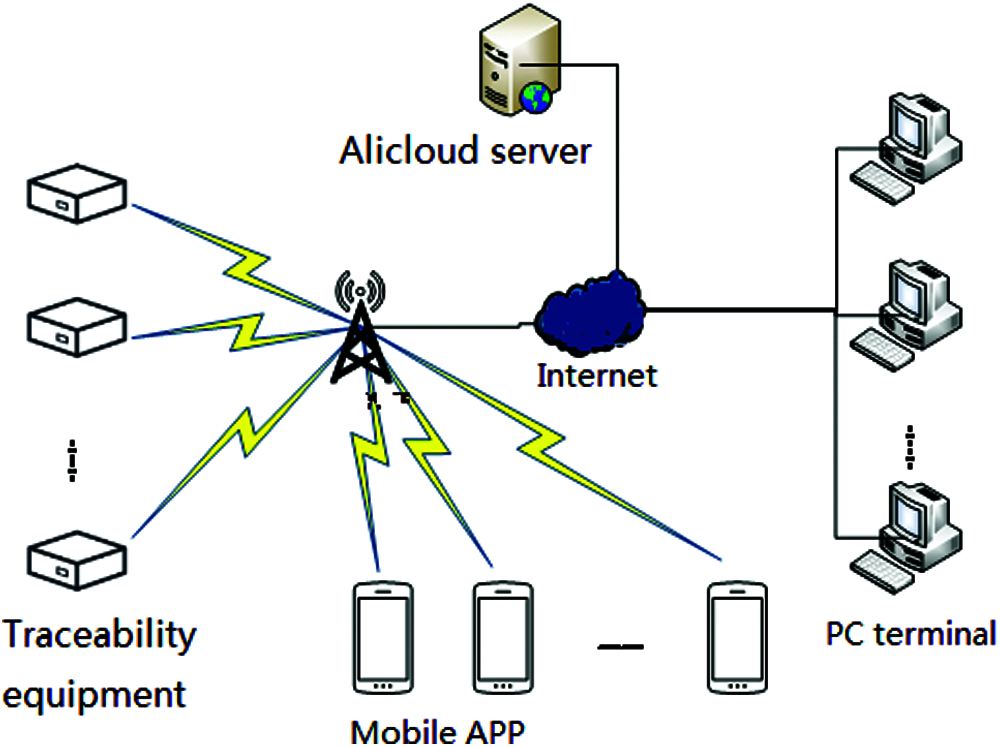
Figure 1: System network topology
The main modules and components of the monitoring system are briefly introduced. (1) the core module of the system: it adopts the STM32F103 chip with STM32F103RET6 model to realize the functions of collecting data, processing, and forwarding. The chip is packaged with an LQFP64 pin and has 512K bytes Flash, which could operate from −40°C to 85°C. It meets the experimental needs based on an ultra-low-power ARM32 bit Cortex-M3 core. (2) data acquisition module: laser PM2.5 sensor module is used to measure the ambient air quality; raindrop sensor is used to monitor the rainfall; soil moisture sensor is used to monitor the soil moisture in the environment; DHT11 temperature and humidity sensor are used to monitor the environmental parameters; photosensitive resistance sensor is used to measure the light intensity. (3) data transmission module: A6 GPRS module undertakes the task of data “transportation”, which is a mobile data transmission, providing developers with a serial port to voice call, short message, GPRS, and other data transmission functions. It is widely used in power environment detection, Internet of things and other fields. The system could transmit the data forwarded by the STM32 chip to the corresponding Ali cloud server through the Internet.
It uses the software Altium Designer 9 to draw the circuit diagram of the real-time monitoring equipment. Fig. 2 is the circuit design of the core part.
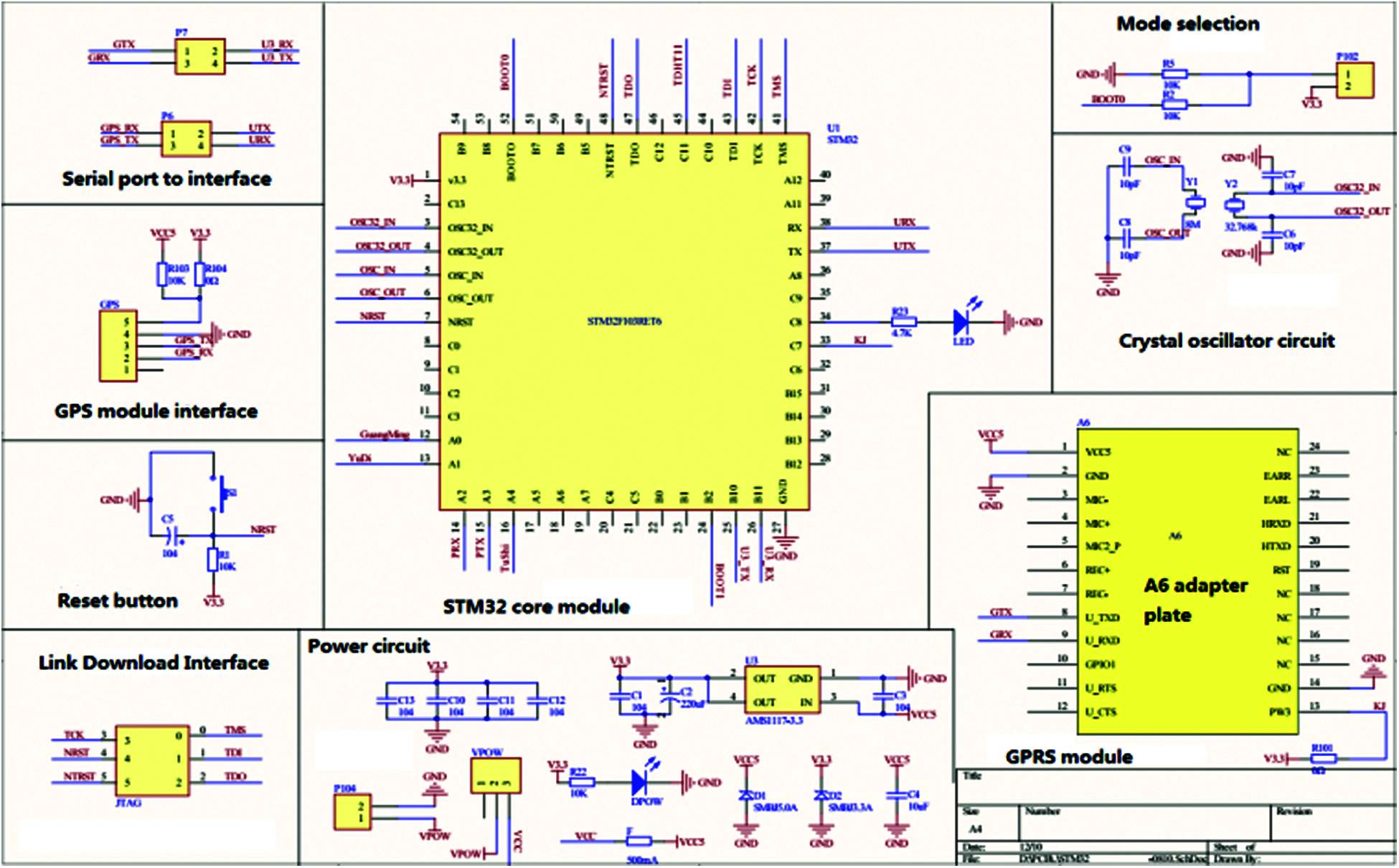
Figure 2: Circuit design of core part
The circuit diagram of the sensor is shown in Fig. 3, along with each component code and system test. It consists of two parts: the APP mobile terminal and the Web terminal. APP Users can view the collected data by real-time monitoring devices on APP and can also watch live broadcasts or launch live broadcasts to other customers; WEB server is developed for users of real-time monitoring devices to manage relevant data.

Figure 3: Circuit design drawing of sensor
4.3 Program Implementation of Real-Time Monitoring Equipment
PM2.5 sensor and STM32 chip use serial communication, while the STM32 chip does not need to send control commands to the PM2.5 sensor. Therefore, the implementation of the PM2.5 sensor driver file only needs to write RX pin (A3) receiving data code, and the function involved is pmUsart_ Read (). As shown in Fig. 4.
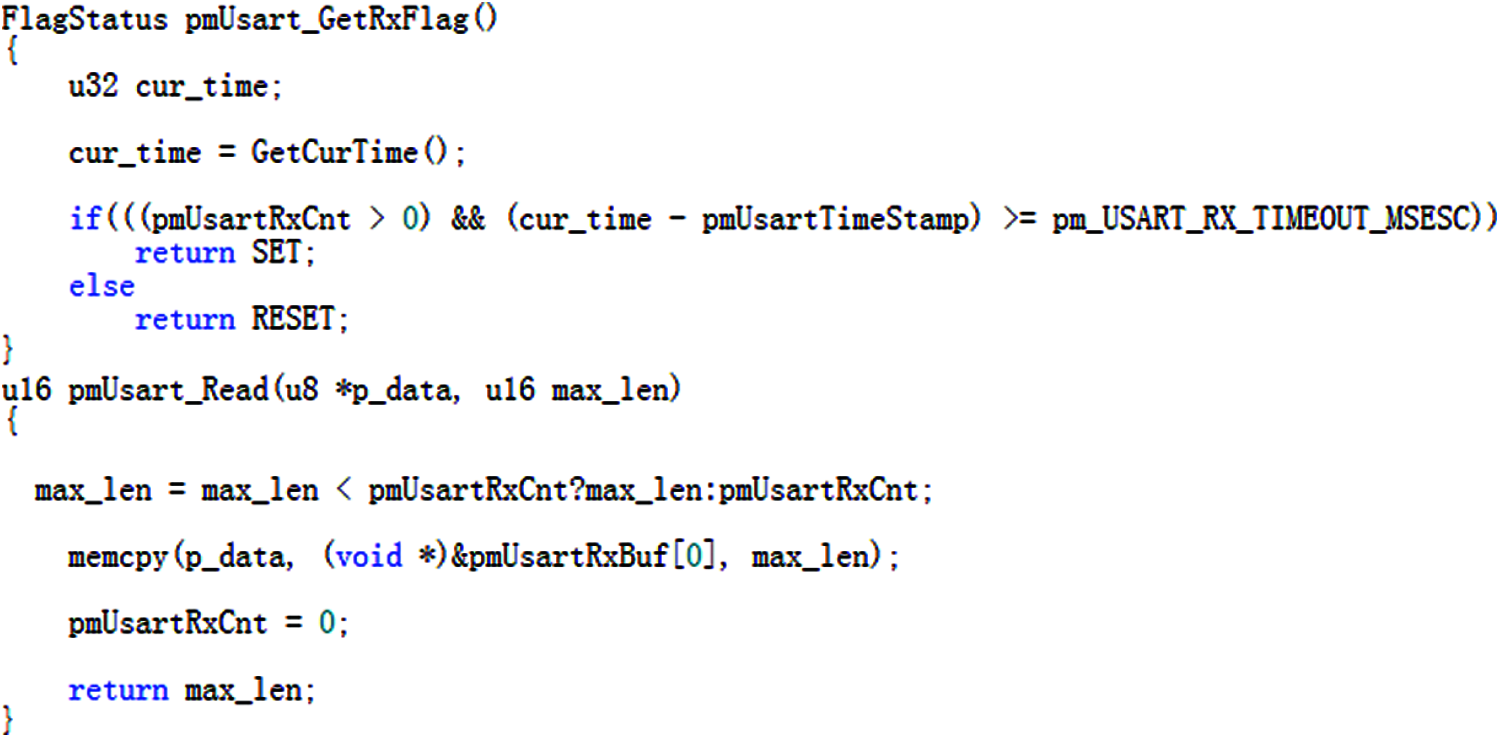
Figure 4: PM2.5 sensor receiving data function
4.4 Function Realization of Real-Time Monitoring Equipment Management System
The home page of APP mainly displays the list of agricultural products monitored by all equipments, where customers can find the agricultural products they like, and click to jump to the detailed page for the detailed description. The data displayed on the home page include agricultural product categories, agricultural product names, agricultural product profiles, clicks, and other display data. Among them, the live broadcast function can better display and sell agricultural products for farmers. The live broadcast function consists of two modules: activating the live broadcast module and watching the live broadcast module. Users can show agricultural products to all customers by launching a live broadcast. Those who watch the live broadcast can come to the page by clicking the corresponding room number. The product details interface and device management interface are shown in Figs. 5 and 6.
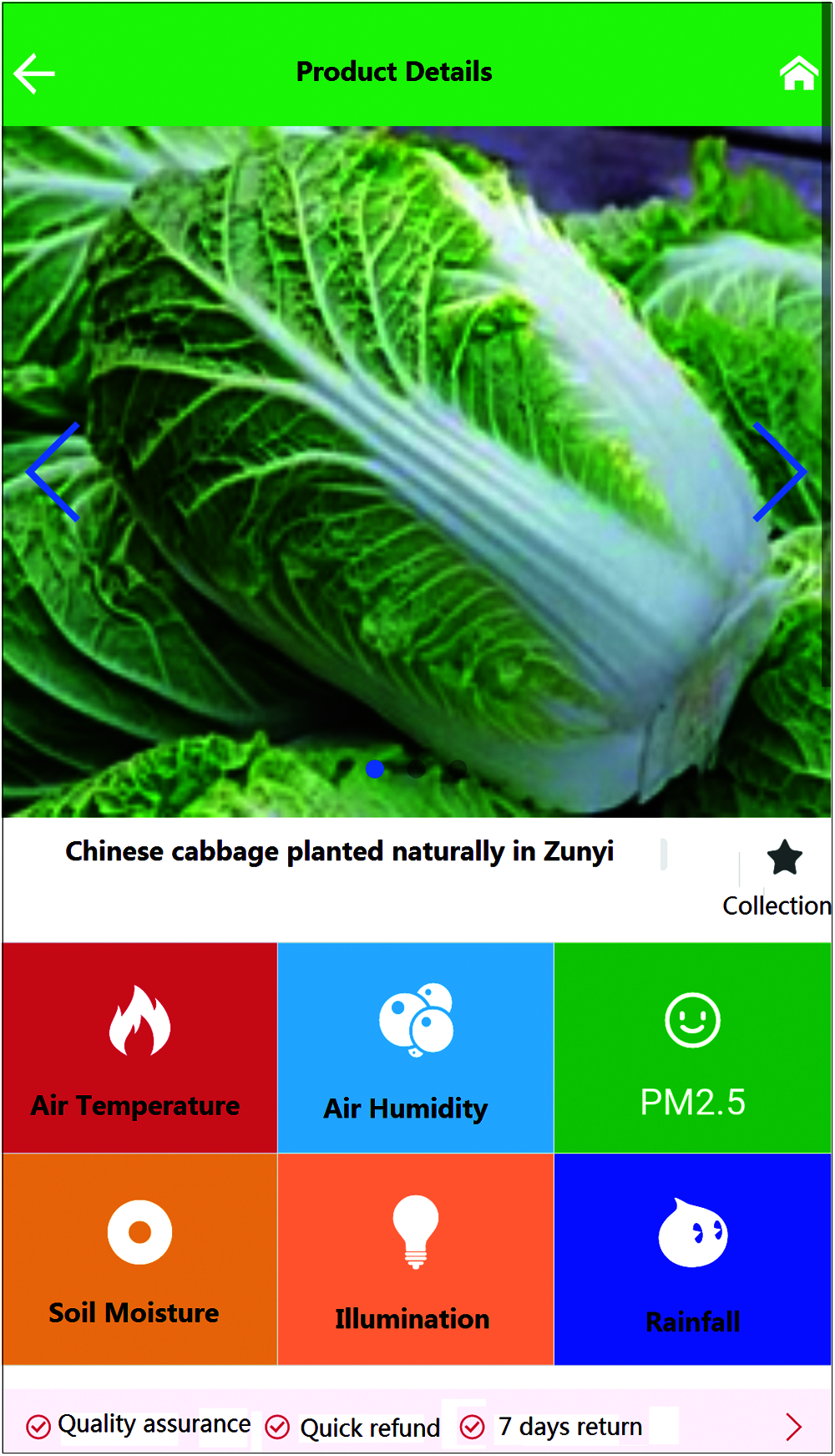
Figure 5: Product details interface
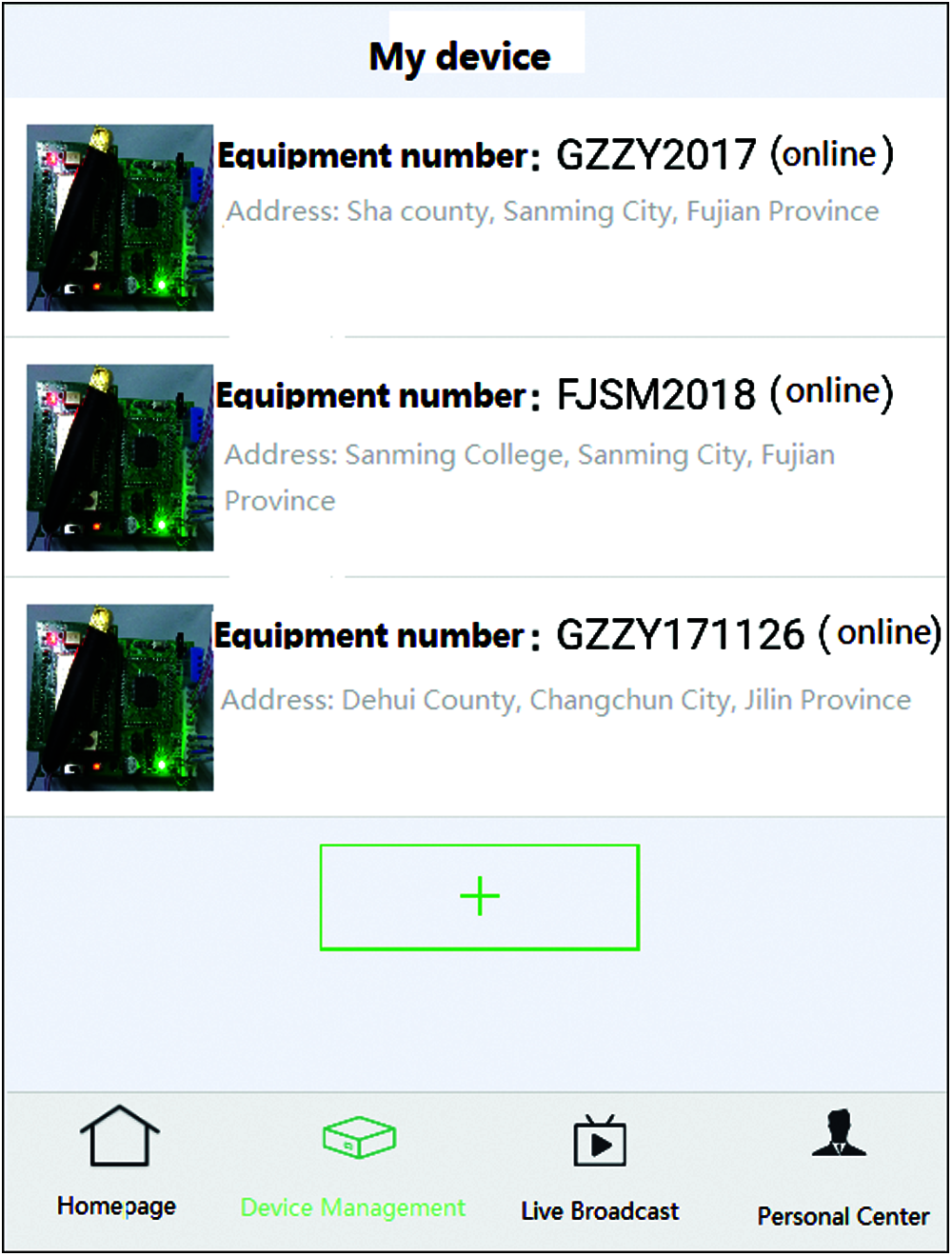
Figure 6: Equipment management interface
Web server:
Among them, the functions of the data management module are as follows: It can add and modify the relevant agricultural product data displayed on the app. Server users can modify the content displayed on the home page, the details page, and the management of LVB room numbers. Users can also view the historical data without modifying the data collected by the device.
Fig. 7 shows the historical data of the device. Users can view the historical data of different devices by selecting the ID number. The field properties of the following table are serial number, air temperature, air humidity, PM2.5, soil moisture, rainfall, illumination and collection time. After managing the data, the growth environment can be monitored, and data storage can be realized by uploading data to a cloud server through GPRS. Users can view the relevant agricultural product environmental data anytime and anywhere through the mobile client.
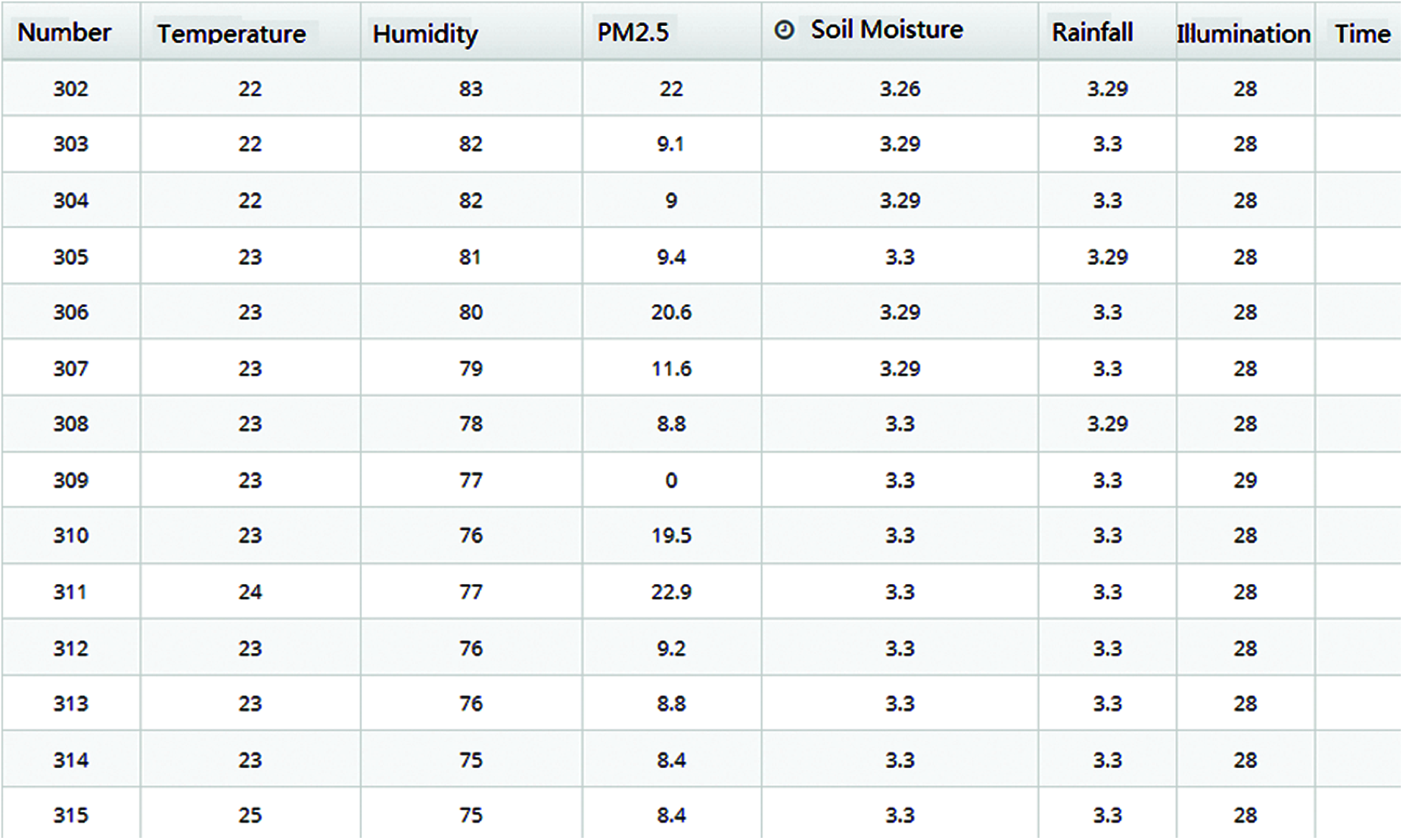
Figure 7: Device history data
This paper designs and develops agricultural crop growth environment monitoring terminal system with real-time access to crop growth environment parameters such as temperature and humidity, illuminance, CO2 concentration and soil data through experimental debugging. The relevant data provides strong support for the traceability model of agricultural products. Then it can realize multi-point monitoring, intelligent control, and automatic operation of crop growth environment while collating and analyzing the application layer. It promotes intelligent processing, improves the utilization efficiency of agricultural resources and enhances the development of modern agriculture. Therefore, it can save agricultural production costs, increase crop output and sales, thus contributing a positive impact on the development of agricultural IoT [16–19].
The application of agricultural product traceability technology provides technical support for agricultural IoT and promotes the intelligent development with a new development model. It can monitor crops or farmland through real-time information collection equipment, so as to understand the growth status, and users can grasp the real time planting technology and mode of planting and the management mode in the production process. At the same time, it also provides operators with a scientific planting, breeding, and management mode to reduce operating costs. The traceability technology uses the IoT technology to realize intelligence, optimize the definition of intelligent agriculture, improve the technology of agricultural IoT, and make intelligent agriculture more in line with the development prospects of modern agriculture. By contrast, it can achieve the goal of revitalizing the countryside and promote the scientific development of agriculture nation widely [20].
Funding Statement: This research is based upon works supported by Grant 19YG02, Sanming University. Along with Science and technology project of Fujian Education Department of China (JAT160464, B201613), On-campus project of Sanming University (B201205/Q).
Conflicts of Interest: The authors are grateful to those anonymous referees for elaborately review the earlier versions. Their valuable suggestions have substantially improved the quality of exposition, shape, and content of the article.
1. D. Zhu, H. Du and Y. Wang, “An IoT-oriented real-time storage mechanism for massive small files based on swift,” International Journal of Embedded Systems, vol. 12, no. 1, pp. 72–80, 2020. [Google Scholar]
2. D. Zhu, Y. Sun and H. Du, “HUNA: A method of hierarchical unsupervised network alignment for IoT,” IEEE Internet of Things Journal, vol. 8, no. 5, pp. 3201–3210, 2020. [Google Scholar]
3. C. Wang and H. Li, “Key technologies of NB-IoT and their application in agricultural internet of things,” Electronic Technology and Software Engineering, vol. 1, no. 16, pp. 20, 2017. [Google Scholar]
4. H. Hou, “Key technologies of NB-IoT and application prospects,” Communication World, vol. 1, no. 14, pp. 1–2, 2017. [Google Scholar]
5. Y. Zou, X. Ding and Q. Wang, “Key technologies of NB-IoT and application prospects,” Zhongxing Communication Technology, vol. 23, no. 1, pp. 43–46, 2017. [Google Scholar]
6. L. Wang and R. Wang, “Analysis of NB-IoT power control mode and low power technology,” Telecom Engineering Technics and Standardization, vol. 31, no. 6, pp. 16–19, 2018. [Google Scholar]
7. G. Dai and J. Yu, “Generation background of NB-IoT, standard development and characteristics and business research,” Special Issue of 2016 Guangdong Honeycomb Internet of Things Development Forum, vol. 1, pp. 48–53, 2016. [Google Scholar]
8. X. Peng, X. Li and X. Chen, “Research on development of NB-IoT technology and network deployment strategy,” Post and Telecommunications Design Technology, vol. 1, no. 3, pp. 58–61, 2017. [Google Scholar]
9. F. Zhang and Y. Liu, “Research on the development status and trend of NB-IoT technology,” China New Communications, vol. 21, no. 12, pp. 11–14, 2019. [Google Scholar]
10. J. Guo, “Research and application of modern agricultural Internet of Things monitoring node based on NB-IoT,” Ph.D. dissertation. Yangzhou University, China, 2018. [Google Scholar]
11. P. J. Bi, D. P. Sun, Y. M. Huang and Y. L. Wang, “Narrow-band internet of things (NB-IoT) research and application,” Shandong Communication Technology, vol. 37, no. 4, pp. 1–5, 2017. [Google Scholar]
12. L. Fang, Y. Li and X. Yun, “THP: A novel authentication scheme to prevent multiple attacks in SDN-based IoT network,” IEEE Internet of Things Journal, vol. 9, no. 9, pp. 5745–5759, 2019. [Google Scholar]
13. J. Xu, L. Wei and Y. Zhang, “Dynamic fully homomorphic encryption-based merkle tree for lightweight streaming authenticated data structures,” Journal of Network and Computer Applications, vol. 107, no. 3, pp. 113–124, 2018. [Google Scholar]
14. Y. Ren, F. Zhu and P. K. Sharma, “Data query mechanism based on hash computing power of blockchain in internet of things,” Sensors, vol. 20, no. 1, pp. 207, 2020. [Google Scholar]
15. J. Xu, L. Wei and W. Wu, “Privacy-preserving data integrity verification by using lightweight streaming authenticated data structures for healthcare cyber-physical system,” Future Generation Computer Systems, vol. 108, no. 1, pp. 1287–1296, 2020. [Google Scholar]
16. J. Xu, Y. Yu and Q. Meng, “Role-based access control model for cloud storage using identity-based cryptosystem,” Mobile Networks and Applications, vol. 59, no. 2, pp. 1–18, 2020. [Google Scholar]
17. J. Xu, A. Wang and J. Wu, “SPCSS: Social network based privacy-preserving criminal suspects sensing,” IEEE Transactions on Computational Social Systems, vol. 7, no. 1, pp. 261–274, 2020. [Google Scholar]
18. S. Zhang, Y. Chang and L. Yan, “Quantum communication networks and trust management: A survey,” Computers, Materials & Continua, vol. 61, no. 3, pp. 1145–1174, 2020. [Google Scholar]
19. L. Yan, Y. Chang and S. Zhang, “Measure-resend semi-quantum private comparison scheme using GHZ class states,” Computers, Materials & Continua, vol. 61, no. 2, pp. 877–887, 2019. [Google Scholar]
20. C. Yan, S. Zhang, L. Yan, G. Han and H. Song, “A quantum authorization management protocol based on EPR pairs,” Computers, Materials & Continua, vol. 59, no. 3, pp. 1005–1014, 2019. [Google Scholar]
 | This work is licensed under a Creative Commons Attribution 4.0 International License, which permits unrestricted use, distribution, and reproduction in any medium, provided the original work is properly cited. |